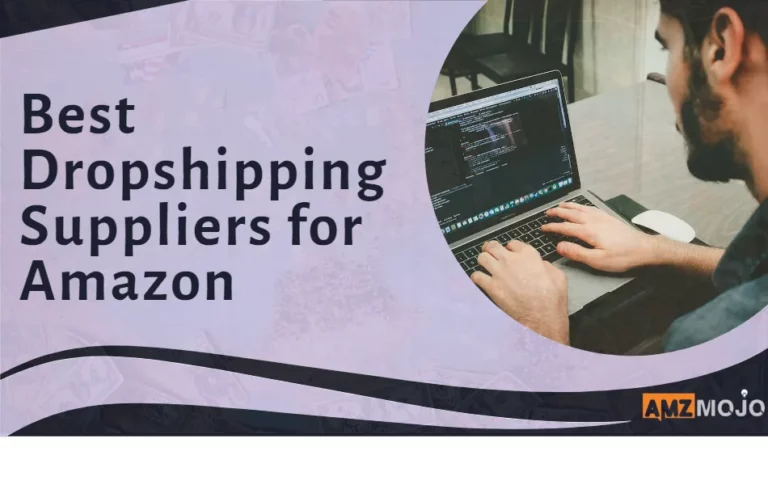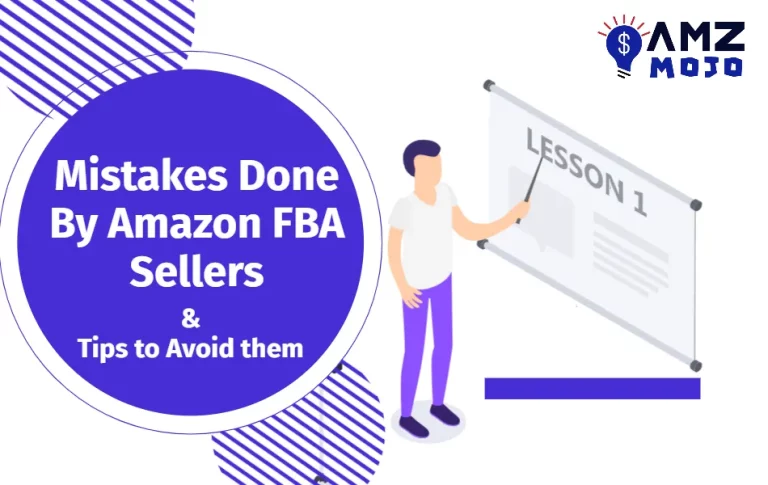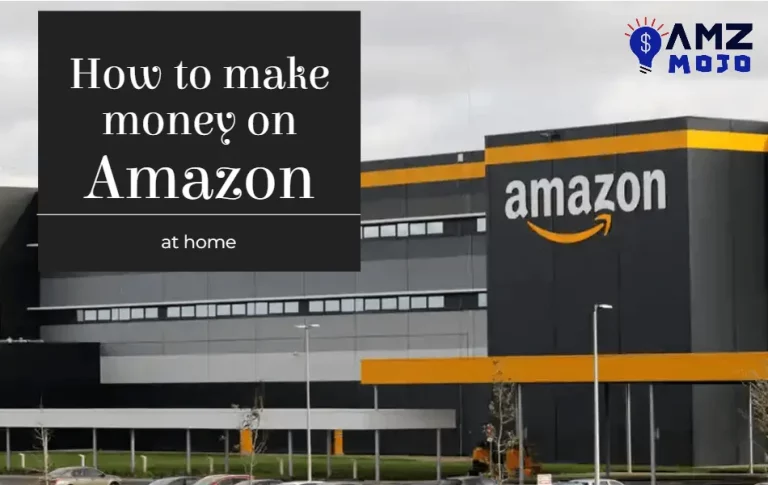Amazon sells millions of items, and everyone knows this, but did you know that the similar is the number of returns? But since it's the world's biggest online retailer – Does Amazon check returns? Ever? Do they even care about it? If yes, how can it affect the customer and sellers, If no, what exactly happens to returned Amazon orders? We'll explore it all below, for you!
Before getting into the overall Amazon returns process, let's get into a bit of statistics first. In the third quarter of 2022 itself Amazon recorded the highest ever sale of $127.9 billion, and is one of the biggest retail eCommerce players. But what do these numbers say?
The kind of trust the brand has built for itself for individuals across the globe is amazing, from quick delivery to quick returns and refunds, you name it, and Amazon literally has got customers covered with everything they would need. Even though the marketplace is loaded with millions of products, and thousands of deliveries are happening every minute, the customer satisfaction rate on Amazon is the best.
When we say this, what we actually mean here is: whenever a customer is not satisfied with the product, the marketplace often gives them a 30- day window to return/replace it all. Whatever the reasons maybe, buyers can always return the product, and Amazon won't even charge them a penny.
However, because of this feature only, many customers on Amazon buy stuff and return it quite often, so the question that arises here is: When the returns are in bulk , does Amazon screen them properly? Do they even check each return before sending it to other buyers? And to the last, do they check every return, or is it just a few?
What Type of Orders do Customers Return?
As mentioned previously, there are a variety of reasons for which a customer can return a product on Amazon. And for obvious reasons, whenever a customer raises a return they will have to mention the reason for the same, like “no longer needed”. A few common reasons one can mention for returns are:
- Defective item: The item delivered to the customer is simply defective, broken, is in a used state, or not even working at all.
- Unwanted item: The item delivered to the customer is not exactly the one ordered by the customer, or the customer might have changed their mind.
- Unauthorized purchase: The item delivered here was because of customer's mistake, they might have ordered it by mistakenly.
- Item was delivered late: The order delivery took much time than what customer expected or Amazon stated.
- Accidentally ordered a wrong product: This usually happens when the customer wanted to buy another product, but they randomly hit the buy now button and ended up buying another product.
- Product is not as same as described: The product delivered to the customer is not as same as the seller described it on the Amazon marketplace (usually the product's feature or color).
Now, the above was all from the customer's perspective. But if you are a Amazon FBA seller, selling any product on Amazon, and any customer raises reasons like, “defective product”, “product is not as same as described”, then Amazon might immediately charge your seller account for the overall return cost. And if the number of these type of return requests increases, Amazon might even suspend your account.
Click here to read about Amazon Refund Policy
What happens to these Amazon Product Returns? | Does Amazon Check Returns?
Above was everything about Amazon returns, now we'll be talking about how Amazon handles these huge quantities of returns. Before sending any product to the Amazon FC center, the marketplace has recently asked delivery boys to check out whether the product returned is in good state or not. If this doesn't happen, (if the delivery guy never checks the return) instead of passing it to the FC center, the scenario over there changes a lot. Over here, Amazon checks returns on based on a few factors, (we have mentioned it all below):
A Few Factors Amazon looks after before Checking Returned Products
1. Price of the product
The very first factor Amazon looks into checking the returned product is the price of the product itself. Needless to say, Amazon FC center is loaded with thousands of returned products, and the pricing of each differs a lot. Quite often, the products which are expensive are more prone to Amazon return frauds (like people sending out an older piece of electronics, or delivering an entirely different product while keeping the new one with them).
Hence, Amazon first segregates the returns on the basis of pricing, if the price is less, and the checking time is more, Amazon might not check the product at all. But, if the product is highly expensive, then the chances of it being checked by the associates is more. Major things Amazon looks into while checking returns are: damaged products, empty boxes, products returned in damaged state, counterfeit items sent, old products being swapped with the new one (every Amazon product comes with a serial number which the associates check to make sure the product is just the same as delivered).
2. Return history of the customer
The next factor Amazon looks into before checking any returns is the Amazon return history of the customer itself. If you are new to this, do remember that Amazon is super powerful, it keeps a track of its customers, like – how often a customer is returning a product, what are the common reasons for product returns, and do they actually purchase an order or simply keep on returning it.
Additionally, Amazon puts in extreme efforts to put just the best sellers on their marketplace, they have already been spending thousands of dollars to give customers just the best – hence, a single return is super expensive to Amazon and third party sellers alike. Hence, if you have been caught returning orders often, or committing any such Amazon Return Frauds, even if the cost of the order is relatively low, Amazon might suspend/ban your account as well.
3. Type of the product returned
The last factor Amazon looks into before inspecting returns is the type of the product itself. For example, Amazon has extensive data of products that are returned quite often, along with a list of products that are more prone to issues than others. Here, we will take the example of fragile products like glasses and crockery – these products often break while in the transit itself, and electronic appliances or mobile phones and laptops are more prone to Amazon Return Frauds. So, if the return received is of the above type, associates will more likely inspect the return then and there.
4. But, is Amazon checking nearly all the returns? | Amazon Return Frauds
You bet, now that we have explored the list of returns Amazon prioritizes, it's time to find out whether Amazon nearly checks all the returns. Let's look at it this way – to perform any type of inspection, Amazon needs a sheer amount of workforce to meticulously check all the tiny details, but since the products range from least priced to supremely priced, is it affordable enough to check out all the returns? Practically we would say No!
But that doesn't mean Amazon never checks all the returns, instead to get over this issue better, Amazon sends a shipping label along with every order. And whenever the delivery associate picks up the order, they will scan the label and Amazon gets notified that you have returned the item. Further, when the product arrives at the warehouse, employees over there sort the orders according to different departments.
5. And, here's what Amazon does with returned products!
Now that the returned products are labeled and sorted, the next question that would come into your mind is: What Amazon does with returned products?
Since the return window if of 30 days on Amazon, a few buyers return products after using it for a bit – now these products aren't sellable again. A few products returned are defected and not in good condition – hence even these are not sellable. Products which are used for a few days, but is still in the best condition (looks new), Amazon adds it to the warehouse. Other products that are slightly not usable are packed again and sent to liquidation companies. These companies buy these products at a lower cost.
There's even a return pallete available, the products on this pallete goes to Amazon shelves itself, any customer can buy this pallete at a cheaper cost, from the official Amazon Return Pallets website. If you will go to this website, you will see a list of products sold at a highly discounted price, but that doesn't mean all the products here are defected. Instead, Amazon even lists out customer ratings so that buyers can make a wiser decision whether they should buy this returned products or not.
Sometimes Amazon even returns the products to the seller itself (the seller has to pay an extra amount), and then the seller can process the order and send it back to nearest Amazon warehouse for sorting and repackaging. To the last, since Amazon has previously categorized the returns, it resells the products Amazon grades, like: Used (like new), Used (very good), Used (good), and Used (acceptable). After doing proper grading, Amazon lists out these products to its website and adds a reselling tag to it for customers to know that this is not a fresh product, but still a good one to go for!
Also Read: How does Amazon Fulfillment Center Work?
Amazon Check Returns | FAQs
Does Amazon check returned items?
Yes, Amazon performs a quality inspection and segregation process to check all the returned items to further resell it to new customers.
What happens after returning the wrong item to Amazon?
After you return wrong items to Amazon, and the team caught you in the inspection, and if you have been doing this for long, your account might get banned.
What happens if Amazon delivers the wrong item?
If Amazon delivers wrong item, as a buyer, you can always a raise a return request and the delivery associate will pick up your order and you will get your refund quickly.
Can Amazon ban customers for wrong returns?
Yes, Amazon have already banned thousands of customers for returning wrong Amazon products. This usually happens when the customers have been caught doing similar activities for a long time.
Can Amazon reject returns?
No, Amazon never reject returns, even if they do, it usually happens when the customer returns a product after 30 days of purchase, or if the delivery associate checks out the product and it's not the same as the one delivered.
Will I have to pay the return shipping fee to Amazon?
No, Amazon never charges its customers any return shipping fee, many a times it's the seller who is charged for the return issues.
On Amazon can I return opened items?
Yes, you can always return opened or defected items on Amazon but make sure to return it within 30 days of making the purchase.
Final Thoughts: How to Return Amazon Item without Replacement?
If you have been purchasing products on Amazon, you would know how lenient Amazon is with the whole returns process – almost every item comes with a specific return window. After all, this was the reason why customers started trusting Amazon more, and the brand became a huge hit across the globe. But since, Amazon gets super huge amounts of returns every day – testing every returns in detail is quite a hectic task. From time, money, to effort, Amazon has to look after every aspect before they inspect any return. That's the reason why several returns on Amazon goes unsuspected. And, a few are often inspected and resold in bulk or in pallets at a cheaper price.
We hope this article gave you a detailed answer to the question – Does Amazon check returns? If yes, stay tuned to AMZMojo to get answers to all Amazon selling and buying related queries!





